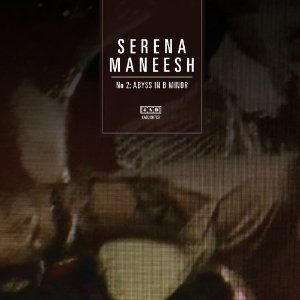I first saw Serena-Maneesh when I somehow scored a VIP pass to the inaugural Great Escape Festival in Brighton in 2006. I’d never heard of them, but in a typically mismatched bill they were opening for that year’s big noise, The Futureheads, and I thought I’d best get in early to be sure of catching the headliners. I was right, and while a queue of disgruntled paying punters snaked along the rainswept beach outside, Serena-Maneesh played the set of the weekend to a Zap Club packed with blaggers like me, ignorant industry insiders and a few bemused pop kids. Within minutes I was prostrating myself at the front of the stage, convinced I was witnessing the rebirth and salvation of visionary, hedonistic rock n’ roll. Everyone else was fighting their way to the bar. So it goes. The Futureheads were shit, by the way.
What Serena-Maneesh were doing that night, and on their self-titled debut album, released around the same time, was essentially a recapitulation of the dislocated digital psychedelia of the 80s/90s cusp, of bands like Loop and My Bloody Valentine, but fused with a hard rock classicism from twenty years earlier. For they certainly didn’t look like shoegazers, hiding behind their fringes; in typical Scandinavian fashion, the Norwegian troupe were adorned in the winklepicker boots, mirrored shades and paisley rags of the cosmic gypsy rock n’ roll outlaw, though one should place them closer to true explorers like Finland’s Circle than camp throwbacks like, say, Turbonegro. And if, on that debut album, tracks like ‘Drain Cosmetics’ found them treading a similar path to such contemporaries as The Warlocks, then sugar-stoned lullabies ‘Candlelighted’ and ‘Her Name Is Suicide’ meandered gently into far less familiar territory, while the likes of ‘Simplicity’ added noir-jazz and fractured dub to the picture.
It’s these latter influences that Serena-Maneesh have developed on their second album, a mere four years down the line. In those four years any number of bands have moved in on the territory Serena-Maneesh staked out; My Bloody Valentine themselves returned to at least intermittent action, and the shoegazing revival has been officially declared open (and is therefore probably almost over, in creative terms). A Place To Bury Strangers, in particular, have taken the subgenre’s potential for ear-bleeding white noise to new limits.
But Serena-Maneesh have moved on too. Emerging from a glassy wash of beatific noise, ‘Ayisha Abyss’ is a churning, thunderously bass-driven groove that recalls Kevin Shields’ collaborations with Primal Scream more than his own iconic outfit. Numbed vocals shift in and out of the kind of dark, dubby funk associated with Death in Vegas, and wasn’t ‘Ayisha’ the title of the Iggy-sung standout track on their debut album? Whatever, gone are the nods to hard rock’s pre-punk salad days, replaced by a contemporary psychedelia that takes 1990 as Year Zero, and so naturally makes little distinction between the sonic possibilities of heavily-treated guitars and drums, and those of the latest digital devices and electronic instrumentation. All is simply sound, there to be manipulated, and if it’s sometimes hard to separate the sources contributing to a song, then the results always sound visceral and spontaneous, like a real rock band rather than a sterile studio recreation.
Buzzing electronic static gives way to gorgeous pop melody on ‘I Just Want To See Your Face,’ wrapped around the carelessly feminine vocals of Lina Wallinder, not a million miles from Lush’s Miki Berenyi. The Pounding ‘Reprobate!’ comes closer to the raw early work of Curve, while The Pale Saints are recalled on ‘Melody for Jaana,’ which finds enigmatic band leader Emile duetting with Elvira Nikolaisen like Lee n’ Nancy strung out in heaven forever. Even the album’s most conventional rocker, ‘Blow Yr Brains Out In The Mourning Rain’ stumbles through a narcotic haze, wah guitars constantly tripped up by the twitching cross-currents of the beats. On ‘Honeyjinx,’ ethereal vocals float drowsily through a treacle-tough soundscape that constantly threatens to swallow them down. ‘D.I.W.S.T.T.D.’ is a distant disco heard from underwater, Lina’s honeyed vocals swept in and out of earshot by waves of mangled guitar noise, and by the closing ‘Magdelena (Symphony #8)’ the various elements (including, incidentally, Sufjan Stevens on flute), coalesce into the aural duplicate of an opium reverie; disassociated, dream-like and slightly queasy.
It hardly seems like only 35 minutes have passed, but there it is – if their debut album suffered from being overlong, sprawling and schizophrenic, then S-M#2 is lean, hungry, focussed and watertight, packing at least the same amount of ideas into half the timespan of its predecessor. In short, if we must have a shoegazing revival, let it sound like this- picking up where the best of those bands left off, realising the possibilities of melody, imagination and loud guitars allied to digital technology’s distorting potential, and taking it to the next stage. Lift your eyes from your footwear, and look to the stars instead.


